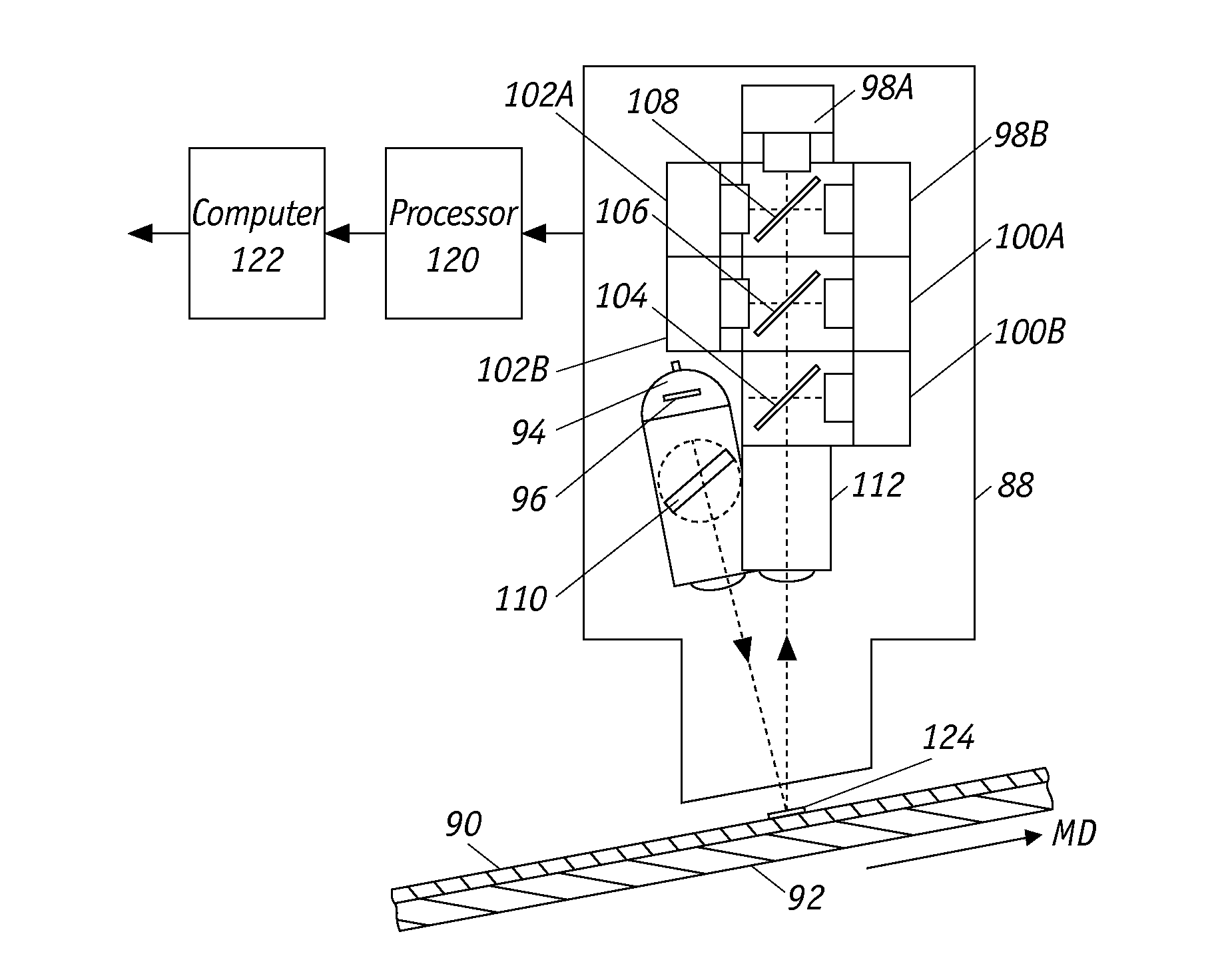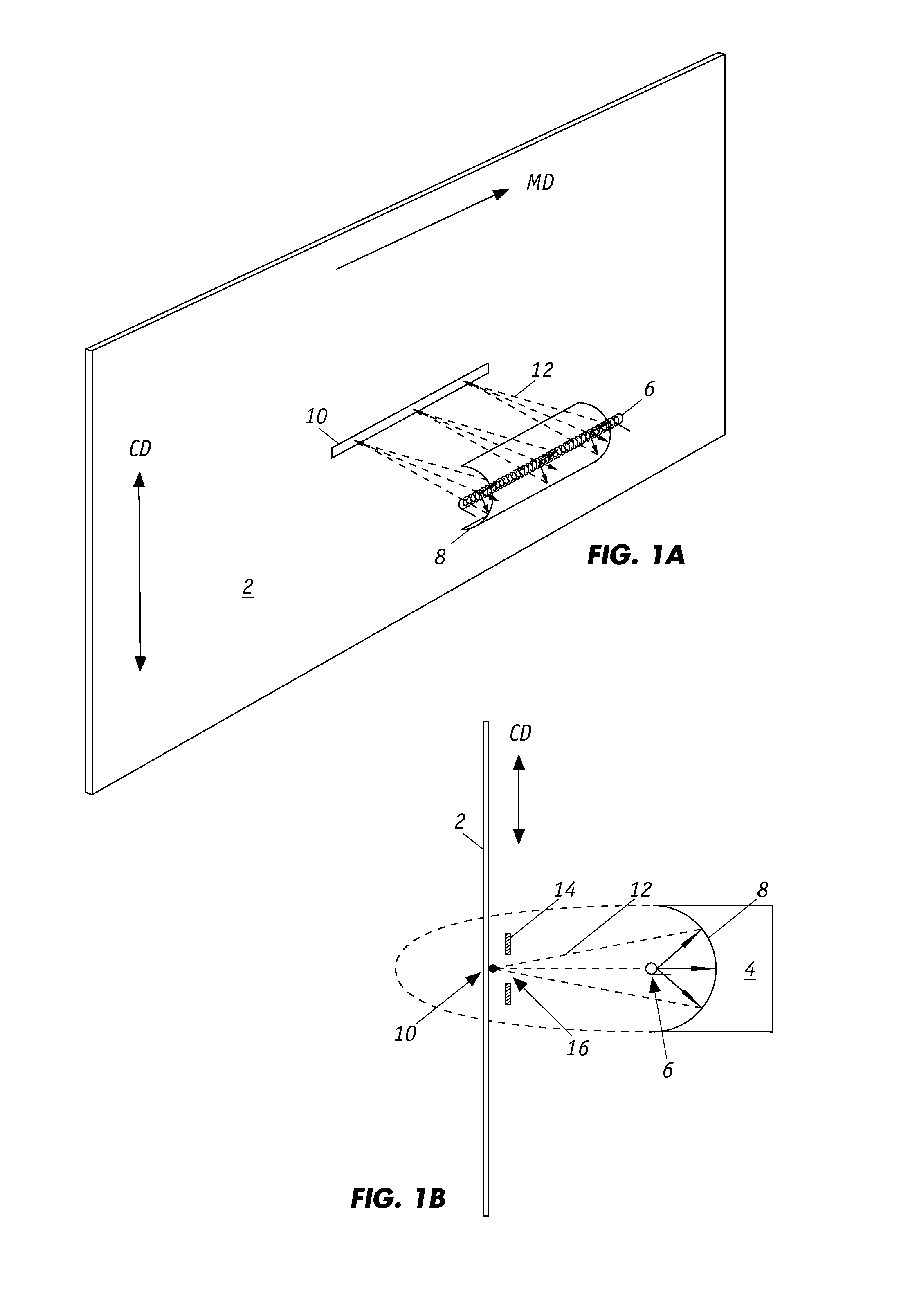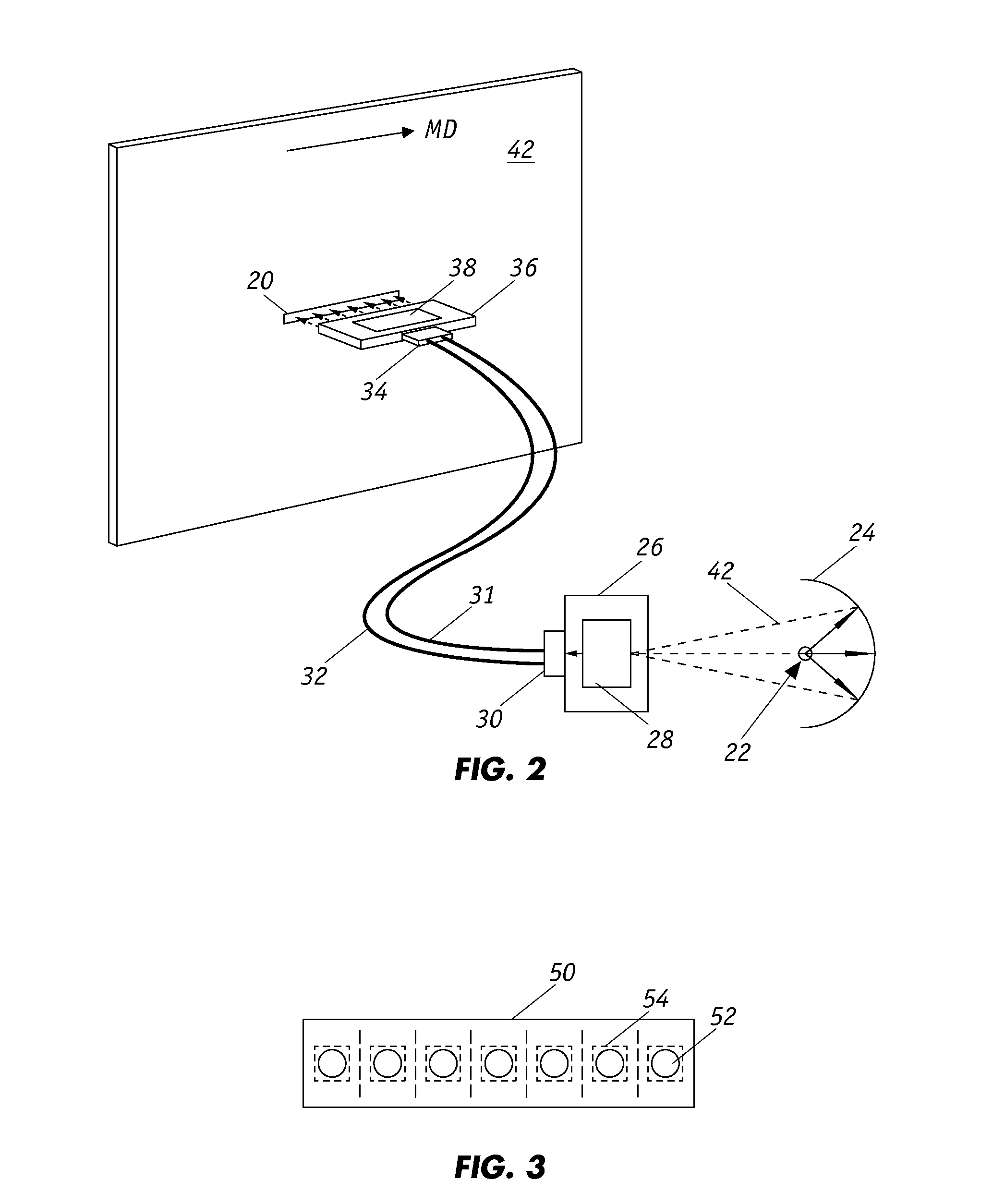Optimized Spatial Resolution for a Spectroscopic Sensor
a spectroscopic sensor and spatial resolution technology, applied in the field of optical sensors, can solve the problems of critical cross-machine direction uniformity and less efficiency of band pass filter, and achieve the effect of optimizing source design, maximizing cross-machine direction resolution, and more precise and detailed information
- Summary
- Abstract
- Description
- Claims
- Application Information
AI Technical Summary
Benefits of technology
Problems solved by technology
Method used
Image
Examples
Embodiment Construction
[0028]The present invention relates to a sensor device for detecting properties of a composition, especially material that is in the form of a film, web or sheet. While the sensor will be illustrated in measuring properties of paper, it is understood that the sensor can be employed to detect a variety of components in a number of different flat materials including, for example, coated materials, plastics, fabrics, and the like.
[0029]FIGS. 1A and 1B show a continuous sheet or web 2 that is moving lengthwise along the machine direction. An infrared radiation source 4 such as a tungsten halogen lamp (THL) includes an elongated filament 6 that is located at the foci of the elliptical reflector 8. The filament is typically configured as a coil. In this fashion, elliptical reflector 8 re-directs IR rays 12 to converge to form an elongated incident beam 10 with an elongated profile on the top surface of sheet 2. Filament 6 is preferably 5 to 30 mm in length; the elongated beam 10 impinging...
PUM
| Property | Measurement | Unit |
|---|---|---|
| length | aaaaa | aaaaa |
| length | aaaaa | aaaaa |
| width | aaaaa | aaaaa |
Abstract
Description
Claims
Application Information
 Login to View More
Login to View More - R&D
- Intellectual Property
- Life Sciences
- Materials
- Tech Scout
- Unparalleled Data Quality
- Higher Quality Content
- 60% Fewer Hallucinations
Browse by: Latest US Patents, China's latest patents, Technical Efficacy Thesaurus, Application Domain, Technology Topic, Popular Technical Reports.
© 2025 PatSnap. All rights reserved.Legal|Privacy policy|Modern Slavery Act Transparency Statement|Sitemap|About US| Contact US: help@patsnap.com



